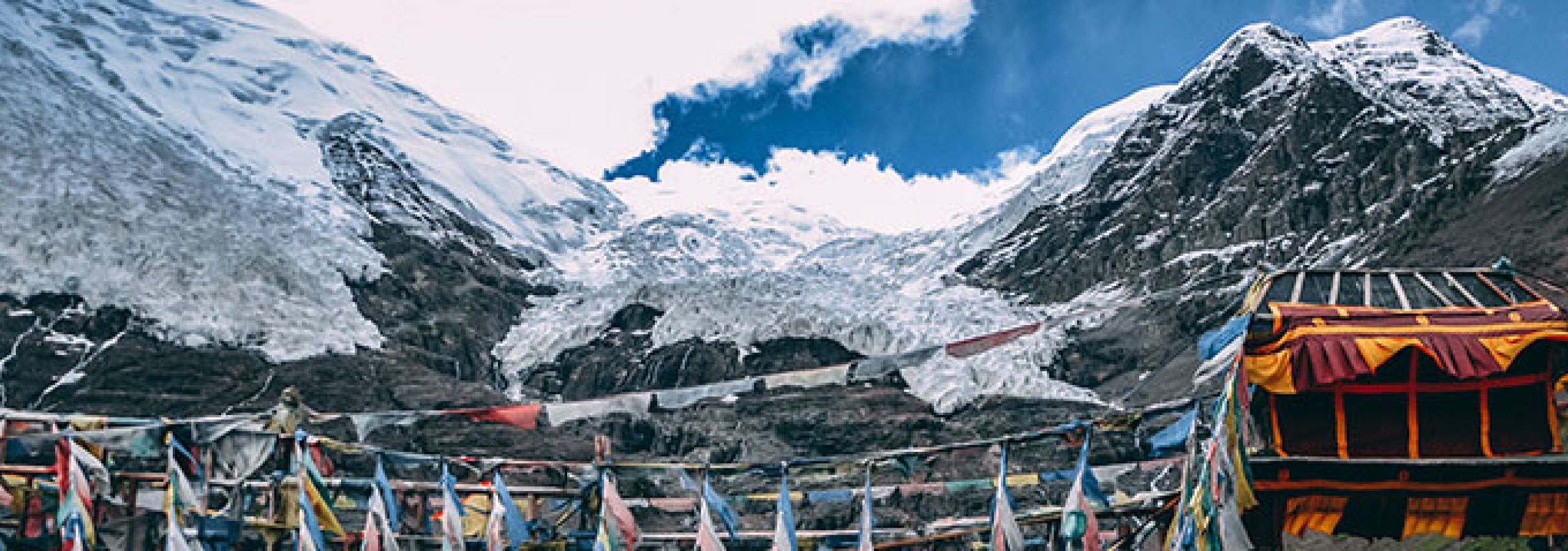
Tibet
The highest elevation in Tibet is Mount Everest which is 8,848 m above the sea level. It is a region in Asia covering much of the Tibetan Plateau. Lhasa is the capital city of Tibet. It shares borders with Myanmar, India, Bhutan and Nepal. It is the homeland of the Tibetan people as well as other ethnic groups such as Monpa, Tamang, Quiang, and Sherpa people.
The name Tibet is derived from the Mongolian Thubet, the Chinese Tufan, the Tai Thibet and the Arabic Tubbat. Before 1950s Tibet was largely isolated from the rest of the world. It constituted a unique cultural and religious community, marked by the Tibetan language and Tibetan Buddhism. Tibet is also renowned as the pure land on earth which attracts numerous domestic and overseas tourists by its peculiar geological features, magnificent natural scenery, splendid ethnic culture and characteristic local customs and practices. It is also one of the best destinations for mountain explorers and scientific surveyors. Geographically, Tibet can be divided into three major parts, the east, north and south. The eastern part is forest region, occupying about one-fourth of the land. The northern part is open grassland, where nomads, yaks and sheep dwell. This part is approximately half of Tibet. The southern and central part is agricultural region, occupying about one-fourth of Tibet’s land area. All the major cities and towns like Lhasa, Shigatse, Gyantse and Tsetang are located in this area and considered as the cultural center of Tibet. Major rivers of Tibet are the Yangtse, the Gyalmo Ngulchu, the Zachu and the Yarlung Tsangpo. There are 1500 lakes of varied sizes. Lake Nam is located approximately 112 km from Lhasa. It lies at an elevation of 4,718 m and has a surface area of 1,870 sq. km. It is the highest salt lake in the world.
Tibet has a unique climate. The temperature varies greatly between day and night. Valleys in the south of Tibet have warmer climate with great rainfall while the north of Tibet has typical continental climate. The whole year in Tibet can be divided into two different seasons; the dry season and the rainy season. The best time to visit Tibet is in the warm seasons i.e. June, July, August and early September.
Despite mass modernization and dilution of their culture, Tibet remains a resilient land underpinned by rich culture and deep faith. Tibet is a beautiful country with magnificent monasteries, streets lined with prayer wheels and prayer halls of chanting monks. Tibet’s culture is unique in the world due to its geographic and climatic conditions. Tibetan culture and customs reflect the history, politics, economy, psychology, and culture of the Tibetan people. The specific geographic conditions along with the relation with neighboring countries have influenced the development of such vast Tibetan culture. One of the most significant part of Tibetan culture is performing arts including music, drama and dance. In fact, singing and dancing are the integral part of every Tibetan’s daily life. Tibetans are believed to be the most courteous people.
Tibet, a popular destination for tourists and pilgrims, receives thousands of visitors every year. There are only two ways to reach Tibet; either through mainland China or from Nepal. The route through China can be done by either flight or train, and there are flights to Tibet’s Lhasa Gonggar International Airport from Nepal. However, there is another way to get to Tibet from Nepal, and it is one of the most exciting and adventurous routes. The route from Kathmandu follows the Pasang Lhamu Highway, which is little more than a dirt or gravel road in most places, with sporadic stretches of tarmac. The route heads northwest from Kathmandu to Bidur, where it turns north along the edge of the Langtang National Park to Rasuwagadhi Fort.
Earlier the Nepalese merchants conducted trade between Nepal, Tibet, Bengal and India over the Silk Road. This road was initiated during the rule of Chinese Emperor Wudi in150 BC and named ‘Silk Road’ by German Geographer Ferdinand Von in 1877. The road was used for silk sale and trade of other items, exchange of culture, ideas and movements of military and people. Newar traders exported finished products from Nepal and India to Tibet and brought back goods from Tibet and other parts of Central Asia. Metal utensils, sacred statues and rice from Nepal, and textiles and other factory products from India were the main exports to Tibet. The Lhasa Newars brought back gold dust, wool, musk pods, pelts and yak trails. Mule, donkey and yak caravans transported the trade goods over the Himalaya and across Tibetan Plateau. In Nepal, porters carried the loads over the mountains on their backs.
However, these ancient trade routes can now be explored with 4WD Adventure. Trithunga Adventure provides a four-wheel drive package for you to explore the natural, cultural and historical places via road. In this trip the adventurers can drive themselves and they will be guided under experienced teams. It provides wonderful opportunity for the adventurers to witness the natural and landscape beauty, learn and experience about the culture and traditions of people from Tibet and Mustang. It is definitely very adventurous and gives you lifetime of experiences and memories.
Tibet has much more to offer, including many ancient monasteries where tradition and culture are unabated, fascinating natural landscapes like vast blue lakes. Tibet is not just the ‘Roof of the World’ but also the seat of an ancient civilization rich in culture and tradition. Thus, visiting Tibet via road is overall a worthy experience.
